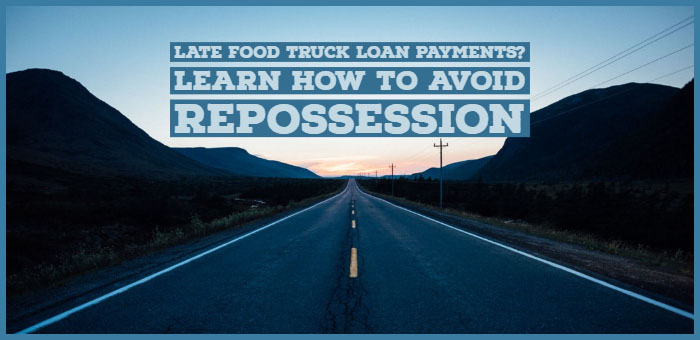A developed food truck design is an absolute must if you want your food truck to be efficient and safe. Not every prospective vendor is going to purchase a fully designed and equipped vehicle. Others may want to build their own food truck from scratch. Careful planning in the design of the kitchen will save you money and time during the build-out phase. Over time will even increase the profitability of your food truck.
Because of this we put this article together with the basic steps of food truck design. Make sure to review these tips before you start looking for food trucks for sale or begin the process of installing your food truck equipment.
Food Truck Design Basics
Your food truck design is primarily dictated by the minimal space you have as well as your required equipment and budget. When designing your food truck kitchen, always consider function and ergonomics. This step will always be appreciated by your food truck employees.
List Your Menu Items
The first step in your food truck design should be determining your menu. Prepare a detailed list or menu of all foods you plan to prepare in the truck. Describe in detail the method of food storage and preparation. This is one of the most important steps in planning any type of kitchen and should be done prior to choosing equipment. You do not know what kind of equipment you will need until you have decided on the foods you will prepare.
Include all menu items you may wish to add in the future. Proper planning will avoid costly changes you could run into if these changes need to be made after the kitchen has been completed.
RELATED: Helpful Tips For Developing Start-Up Food Truck Menus
List Your Food Truck Equipment
Now that you know what you’ll be serving, create a complete list, including detailed measurements, of all equipment you need. This includes equipment required for food prep, refrigeration, and storage. The size and amount of equipment, plus food preparation counter surface, will dictate the amount of space your food truck kitchen must have. Please note, every single item of equipment must meet commercial health code requirements.
RELATED: Match Your Menu To Your Food Truck Equipment
If you are using a used truck be sure to take exact measurements of the size of the space set aside for the kitchen. Make note of existing service windows, doorways, and electrical outlets. Make a sketch of the existing space, making note of the present flooring material, wall and ceiling surface and all heating, exhaust or air-conditioning vents. For a new truck, draw out a rough sketch of the dimensions and special features of the proposed construction of your mobile kitchen.
RELATED: Food Truck Lighting Design
Determine How Much Water & Power Is Required
Now that you know what equipment you’ll need, now you need to determine how you’ll power the equipment. You’ll also need to calculate how much water your truck will need for service. These calculations will help you plan the size of generator, propane tanks and water holding will be required.
RELATED: Generator Maintenance Basics For Mobile Food Vendors
Plan Your Food Truck Design
Plan how you will use the space with your plan of the equipment inside your food truck. Function and ergonomics are the most important considerations in the design of kitchen space. Your food truck kitchen should be designed for maximum labor efficiency, safety and functionality.
Make sure that there is plenty of room to move about freely when carrying hot pots and bulky supplies. If employees do not have to waste time and extra movement completing a task, efficiency is increased and fatigue and workplace injuries are reduced.
RELATED: Designing Your Food Truck Kitchen Work Triangle
Setup a Review for Your Food Truck Design
Now it’s time to see if your food truck design will actually be approved. Contact your local city or state department. Find out who is tasked with reviewing all mobile kitchens and make an appointment to review your preliminary plans. Remember that health and fire codes must be met.
Regulations govern how far a food preparation area must be away from any sinks or electrical outlets, the installation of vents, and the size and temperature capacity of insta-hot water units. Make sure you receive a printed copy of all rules and regulations prior to designing the trucks kitchen space. Regulations vary from state to state. City or county ordinances may also apply, so understand which apply to you.
RELATED: What Platform To Run Your Food Truck Business From
Please note. The kitchen area may need to be remodeled to satisfy requirements even if the truck had been licensed in the past.
Create Drawings For Your Food Truck Design
The final step in the food truck design process is creating drawings of your food truck. Prior to purchasing equipment or commencing construction, find out if your municipality requires the submission of design drawings for review. These detailed drawings or blueprints must be reviewed and officially approved by both the health department and fire inspector. These blueprints must include electrical wiring schematics, fire suppression equipment installation drawings, plumbing and electrical installation plans. In some cases you may need to provide a complete list of all building materials used in the completion of your food truck project.
Do you have the the skills to layout or build your kitchen yourself? If not, employ the services of a food truck builder to design the kitchen. They will incorporate all building and health department rules that apply to your area.
RELATED: United States Food Truck Builder List
The Bottom Line
Make sure you use these tips when planning your food truck design. Design is not merely picking equipment that will look good in your truck. Your food truck must function effectively with employees’ comfort and health, as well as the space’s efficiency and safety in mind.
Do you have any additional food truck design tips? If so, share them in the comment section or social media. Facebook | Twitter




